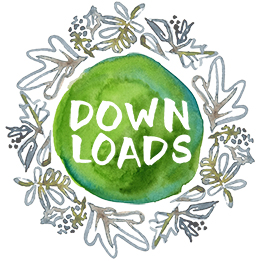
Very often while I’m working in my studio, I think about this historic brick structure. It’s the “Old Salem School” off Highway 14 in Noxubee County, and I think of it because the work table I’ve made a habit of painting and block printing on came from the school. Mr. Cotton, the caretaker from the Noxubee County Historical Society, is a long-time family friend, and he gave the kids and me permission to go inside the very dilapidated building last summer. For years, every time we drove by it on the way to Busy Bee, I said I wanted to go inside and see the space. Last summer, we finally did it.

One reason the school is very interesting to me is that my grandfather went to elementary school there in the early 1920s. Not long ago, we were looking through an old lockbox from my grandmother’s house and found his diploma from Salem Consolidated School, promoting him to high school on April 17, 1925. The school is one of the earliest remaining public schools in Noxubee County, and was officially confirmed on the National Register of Historic Places in 1990.




The structure is basically a four room school house in a dog-trot type plan, with stairs in the center hallway and two large rooms on each side of both stories. On one side the rooms have been divided into smaller spaces connected through a series of doorways. My mother said that during some of the years the building was in use, one side was used as housing for teachers or caretakers.
Upstairs on the east side, the remnants of a corner stage area are still there, and as a child, my mom remembers going to community Christmas suppers held in the room with entertainment and even a visit from Santa Claus on the stage. After the building was no longer used as a school, it became sort of a community center available to the Salem community, including Salem Methodist Church and Concord Baptist Church. From the looks of the chalkboard we found inside, Sunday School classes and church meetings were sometimes held there, and my mom remembers going to birthday parties on the property as well.





During our visit, layers of peeling paint and cracked wall plaster revealed the bones of the building, and the aging patina of old chimney pipes, metal ceiling panels and cornices. And although it is in very severe disrepair, we could still see the remnants of wooden bead board chair rails, shiplap walls, movable classroom panels, and even the brass nameplates of families who donated money to install windows and other features. You can see from the angles in the shiplap photo below, that the building is just on the edge of being structurally sound. I’m afraid it may not last much longer, and I’m very glad we were able to visit when we did. It was interesting to see my children explore the space and to imagine someone going to school there. I hope I was able to impart to them the importance of historic buildings and remembering their significance to a community, especially as they listened to their grandmother talk about her own memories there.





After our visit, I nearly begged Mr. Cotton to allow me to rescue two of the last pieces of movable furniture I found there before they were overtaken with weather and falling down ceiling materials. Mom and I loaded an old six-foot wooden table into Dad’s pick-up along with a large chalkboard that was made to hang on sliding panels in the school classrooms. Underneath the graffiti writing of other explorers, the chalkboard still had names on a list titled “To-Day’s Record”, where Sunday School member attendance and offerings were recorded during years when the building was still in use. We brought the table home, cleaned decades of dust and insect friends from it, and added a little reinforcement to the legs to accommodate printmaking duties. It has become a treasured part of my daily studio activities, inspired by the knot holes and rusted nails as reminders of the heritage I imagine happened there. One of this summer’s projects will be to restore the chalkboard to hang in our entryway, and in the repainting, I plan to replicate that Sunday School secretary’s hand-writing as we create a space to document our own “To-Day’s Record.”


























 Hello & welcome! I’m Haley Montgomery, and I’m the designer and owner of
Hello & welcome! I’m Haley Montgomery, and I’m the designer and owner of 















